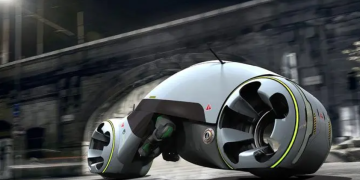Introduction
In today’s rapidly evolving digital landscape, staying ahead of the curve in digital product design and innovation is essential for businesses seeking to captivate and engage users. From user-centered design principles to cutting-edge technologies like augmented reality (AR) and artificial intelligence (AI), this article explores the latest trends shaping the future of digital product design.
User-Centered Design
User-centered design lies at the heart of successful digital products. By prioritizing user needs and experiences, designers can create intuitive and delightful interfaces that resonate with users. Drawing from human-computer interaction principles, user-centered design focuses on understanding user behavior, preferences, and pain points to deliver seamless experiences.
Minimalism and Simplicity
In today’s cluttered digital landscape, minimalism and simplicity are increasingly valued in design. Streamlining user interfaces and experiences not only enhances usability but also conveys a sense of elegance and sophistication. By removing unnecessary elements and distractions, designers can create clean and intuitive interfaces that allow users to focus on the task at hand.
Responsive and Adaptive Design
With the proliferation of devices and screen sizes, responsive and adaptive design has become indispensable in digital product design. By designing for flexibility and scalability, designers can ensure that their products look and perform seamlessly across various devices and platforms. Techniques such as fluid grids, flexible images, and media queries enable designers to create responsive and adaptive experiences that adapt to the user’s device and context.
Data-Driven Design
Data-driven design empowers designers to make informed decisions based on user insights and feedback. By leveraging data from user analytics, A/B testing, and other sources, designers can iterate and refine their designs to better meet user needs and preferences. Data-driven design enables designers to optimize user experiences, increase engagement, and drive business outcomes.
Accessibility and Inclusivity
Designing for accessibility and inclusivity is not only a moral imperative but also a business imperative. By considering the diverse needs of all users, including those with disabilities, designers can create products that are usable by everyone. Accessibility guidelines and standards such as the Web Content Accessibility Guidelines (WCAG) provide valuable guidance for designing inclusive digital experiences that accommodate users of all abilities.
Augmented Reality (AR) and Virtual Reality (VR)
Augmented reality (AR) and virtual reality (VR) technologies are revolutionizing digital product design by immersing users in virtual environments and augmenting their real-world experiences. From interactive product visualizations to immersive storytelling experiences, AR and VR offer endless possibilities for creating engaging and memorable user experiences.
Voice User Interfaces (VUI)
Voice user interfaces (VUI) are gaining traction as an intuitive and hands-free way to interact with digital products. By designing interfaces for voice-controlled interactions, designers can cater to users who prefer spoken commands over traditional input methods. However, designing effective VUIs poses unique challenges, such as understanding natural language processing and accommodating diverse accents and speech patterns.
Artificial Intelligence (AI) Integration
Artificial intelligence (AI) is transforming digital product design by enabling personalized and predictive experiences. From chatbots and virtual assistants to recommendation engines and predictive analytics, AI-powered features enhance user experiences by anticipating user needs and preferences. By harnessing the power of machine learning and natural language processing, designers can create intelligent products that adapt and evolve over time.
Gamification and Engagement
Gamification involves adding game-like elements such as rewards, challenges, and leaderboards to non-game contexts to drive user engagement and motivation. By incorporating gamification principles into digital products, designers can encourage desired behaviors, increase user engagement, and foster loyalty. Gamification strategies such as progress tracking, achievement badges, and social sharing create immersive and rewarding experiences that keep users coming back for more.
Sustainability and Ethical Design
Sustainability and ethical design considerations are increasingly shaping the digital product design landscape. Designers are recognizing the importance of minimizing environmental impact and promoting ethical practices in their designs. By considering factors such as energy efficiency, material sourcing, and social responsibility, designers can create products that are not only innovative and user-friendly but also environmentally sustainable and socially responsible.
Collaborative Design Processes
Collaboration and interdisciplinary teamwork are essential components of successful digital product design. By fostering collaboration among designers, developers, product managers, and other stakeholders, organizations can harness diverse perspectives and expertise to drive innovation and creativity. Tools and methodologies such as design thinking, agile development, and co-creation workshops facilitate collaborative design processes and ensure that all voices are heard throughout the design process.
Blockchain Technology and Design
Blockchain technology has the potential to revolutionize digital product design by enabling secure and transparent transactions and interactions. From decentralized applications (DApps) to blockchain-based authentication and verification systems, designers are exploring innovative ways to integrate blockchain into digital products. By leveraging blockchain technology, designers can create products that are more secure, trustworthy, and resilient to fraud and tampering.
Real-Time Personalization
Real-time personalization involves tailoring user experiences in real-time based on user behavior, preferences, and context. By leveraging machine learning algorithms and user data, designers can deliver personalized content, recommendations, and interactions that resonate with individual users. Real-time personalization enhances user engagement, satisfaction, and retention by providing relevant and timely experiences that meet users’ needs and preferences.
Conclusion
In conclusion, the latest trends in digital product design and innovation are reshaping the way we interact with technology and shaping the future of digital experiences. By embracing user-centered design principles, leveraging cutting-edge technologies, and prioritizing accessibility, inclusivity, and sustainability, designers can create products that are not only innovative and user-friendly but also ethical, inclusive, and sustainable.

FAQs After The Conclusion
- How can I stay updated on the latest trends in digital product design and innovation? Stay informed by following industry publications, attending conferences and webinars, and networking with other professionals in the field.
- What are some common challenges in digital product design? Common challenges include balancing user needs and business goals, staying ahead of technological advancements, and navigating ethical and regulatory considerations.
- How can I incorporate user feedback into my design process? Gather feedback through user interviews, surveys, usability testing, and analytics, and use it to iterate and improve your designs iteratively.
- What role does prototyping play in digital product design? Prototyping allows designers to test and refine their ideas, gather feedback from stakeholders, and validate design decisions before investing in development.
- How can I ensure that my designs are accessible to all users? Follow accessibility guidelines such as the Web Content Accessibility Guidelines (WCAG), conduct accessibility audits and usability testing with diverse user groups, and prioritize inclusivity in your design process.
- What are some emerging technologies that will impact digital product design in the future? Emerging technologies such as augmented reality (AR), virtual reality (VR), artificial intelligence (AI), and blockchain are expected to have a significant impact on digital product design in the future.
- How can I create engaging user experiences that drive user retention? Focus on understanding user needs and preferences, designing intuitive and delightful interfaces, and leveraging techniques such as gamification, personalization, and storytelling to create engaging user experiences that keep users coming back for more.
- What are some best practices for conducting user research? Best practices include defining clear research objectives, recruiting diverse participants, using a combination of qualitative and quantitative methods, and analyzing and synthesizing findings to inform design decisions.
















